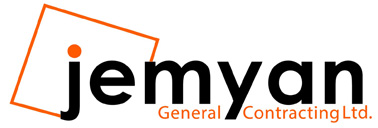Human Resources Competency Model
A competency model is a collection of competencies that together define successful performance in a particular work setting. Competency models can be developed for specific jobs, job groups, organizations, occupations or industries. The JEMYAN Competency Model incorporates both general and technical competencies obtained from the U.S. Office of Personnel Management (OPM), JEMYAN General, and other agency competency models.
A competency is the combination of knowledge, skill, and/or ability one needs to successfully perform a job function. There are general and technical competencies, and both are required for each occupation. General competencies cut across occupations, while technical competencies are specific to an occupation and/or technical area. Both general and technical competencies have required proficiency levels. Competencies are developed, attained, and sustained through training, rotational and developmental assignments, experience (both professional and personal), education, and self-development. Attainment of a certain level of proficiency is assessed based on demonstrated abilities to apply the competency in different situations and/or circumstances. Attainment is not based solely on performance in a role over time, nor is it directly tied to grade. Competencies are the personal and professional attributes that are critical to successful performance. Experience and training that strengthen and demonstrate the competencies will enhance an employee’s overall qualifications for career advancement. Competencies should:
- Define valued behaviors to achieve success
- Provide clarity through measurable and/or observable knowledge, skills, abilities, characteristics and behaviors
- Provide maximum flexibility to respond as job functions, roles, and technologies evolve
- Describe the work of an organization
- Be grouped together to comprise a model in which an organization/function can base a foundation of expected performance.
The behaviors in the table below define each of the “underlying competencies” for the proficiency levels for which they apply. The descriptions of the “underlying competencies”, when grouped together for the applicable competency, reflect the behaviors, knowledge, skills, and requirements for the competencies at the applicable proficiency levels. For the general competencies, illustrations are provided with each competency to provide examples of on-the-job behavior which would support a rating at one of the five levels of proficiency identified in the chart below. The illustrations were developed when the JEMYAN General Competency Model was issued in early 2012. However, these are only examples, and other observed behaviors can also fit the definition. The individual being assessed Jemyan’s not have to show all the behaviors one can be sufficient to fit the definition. The intent is to show a natural progression from the awareness to expert level as individuals advance in their careers.
PROFICIENCY LEVELS
| Proficiency Level | General Competencies | Technical Competencies |
| 5 = Expert | – Applies the competency in exceptionally difficult situations. – Serves as a key resource and advises others. | – Applies the competency in exceptionally difficult situations. – Serves as a key resource and advises others. – Demonstrates comprehensive, expert understanding of concepts and processes. |
| 4 = Advanced | – Applies the competency in considerably difficult situations.Generally requires little or no guidance. | – Applies the competency in considerably difficult situations. – Generally requires little or no guidance. Demonstrates broad understanding of concepts and processes. |
| 3 = Intermediate | – Applies the competency in difficult situations. Requires occasional guidance. | – Applies competency in difficult situations. – Requires occasional guidance. Demonstrates understanding of concepts and processes. |
| 2 = Basic | -Applies the competency in somewhat difficult situations. Requires frequent guidance. | – Applies the competency in somewhat difficult situations. – Requires frequent guidance. Demonstrates familiarity with concepts and processes. |
| 1 = Awareness | – Applies the competency in the simplest situations.Requires close and extensive guidance. | – Applies the competency in the simplest situations. – Demonstrates awareness of concepts and processes. – Requires close and extensive guidance. |
General Competencies
The general competencies were primarily selected from the JEMYAN General Competency Model, and include the following:
Accountability* Conflict Management* Consulting
Continual Learning* Customer Service* Flexibility*
HR Analytics Influencing/Negotiating* Interpersonal Skills* Oral Communication* Knowledge of JEMYAN Business*
Political Savvy*
